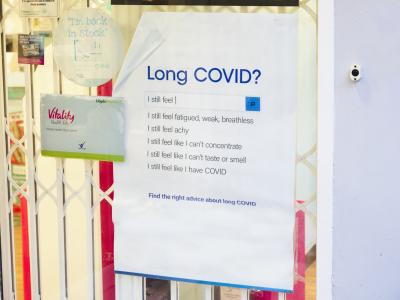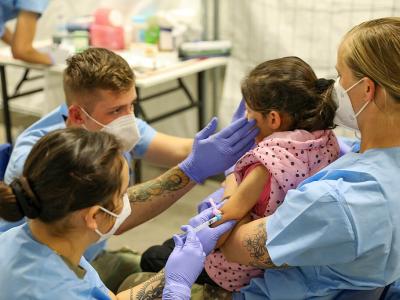Nov 19, 2004 (CIDRAP News) Before the current influenza vaccine shortage arose, Colorado was vaccinating people in mass clinics. After the shortage hit, the preventive medicine chief for the state's Kaiser Permanente clinics found himself driving around with leftover vaccine in his car, calling for information on which hospitals needed the doses.
That suggests the magnitude of the shift that Ned Calonge, MD, MPH, chief medical officer for the Colorado Department of Public Health and Environment (CDPHE), said he and his staff are overseeing.
Still, Calonge is taking a long view on a shortage that many have called a crisis.
"It's a shortage in time and space. I am optimistic that everyone in the priority group who wants a flu shot should be able to get one," Calonge said in a Nov 10 interview. "Eventually."
Colorado has an estimated 1.1 million to 1.2 million high-risk people. The state had received more than 200,000 doses of vaccine before the shortage emerged, Calonge said, but its not clear how many of those vaccinated were in the priority categories listed by the Centers for Disease Control and Prevention (CDC) in Atlanta.
In the weeks following the announcement that 48 million doses of vaccine from Chiron Corp. would not be available, the state received about 196,000 doses in the first phase of the CDC-coordinated distribution of remaining supplies. Last week the state got another 66,500 doses, said Cindy Parmenter, communications director for the CDPHE.
The supply woes have fostered on-the-ground redistribution among providers, Calonge said. In one case five vials of vaccine, or 50 doses, were moved from one clinic to another.
But while some states have gone beyond the CDC's recommendations by excluding healthcare workers or raising the eligible age for vaccine recipients. Colorado has not, Calonge said. As reported in a previous story, he said he has no "scientific basis on which to reprioritize."
Nonetheless, officials have kept the vulnerable populations of long-term care facilities in mind. The vaccine issues have prompted far-ranging policy discussions among healthcare leaders in Colorado, and questions linger, Calonge said.
"If you're a long-term care facility, should you immunize the residents or the staff first?" he asked. "If you're sitting in a long-term care room, the flu isn't going to climb in the window. Somebody brings it in."
The health department is assessing who still needs vaccine, Calonge said.
Colorado is using regional public health emergency planners and epidemiologists hired through a bioterrorism grant to collect that data, Parmenter said. Planners in each of 13 regions are surveying vaccine needs as part of their role in bioterrorism emergency response and disease surveillance.
"We see them as dual-purpose," Parmenter said. "It has been very helpful to us." The planners were completing the needs assessment this week, she said. The state expects to submit an updated vaccine request next week.
Calonge said he worried that the doses given out during Colorado's early flu vaccine clinics could count against the states final tally of doses, even though the state can't ascertain how many high-risk people were vaccinated.
Overall, though, he remains optimistic that redistribution will prove effective.
Calonge said he hopes that with roughly 58 million doses of vaccine nationwide, "We should be able to cover, not all those people who need one (shot), but all those people who seek one."
"Rather than an absolute shortage, this is one of time and place," he said.
See also:
CDC recommendations on who should get flu vaccine during the shortage
http://www.cdc.gov/nip/news/newsltrs/imwrks/2004/200410.htm#topstory



















